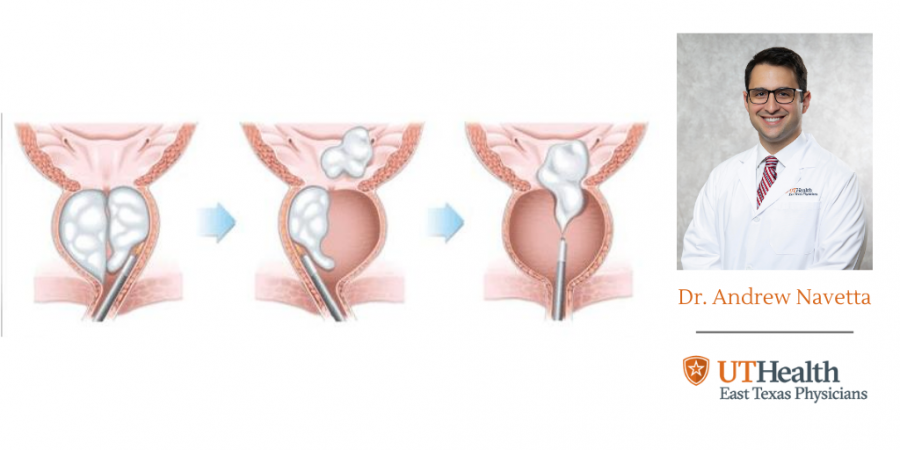
TURP, PVP, OP, REZUM, TUNA, TUMT – These are not just random assortments of letters. They represent different prostate surgical therapies for symptoms secondary to benign prostatic hyperplasia (BPH). Some are obsolete and some have their continued place in routine BPH management. Prostate size is the most important factor in selecting the right therapy from the list above. Some procedures are reserved for only the largest prostates, require incisions on the abdomen and have long catheter times; while others are only for the small-to-moderate-sized prostate.
HoLEP (holmium laser enucleation of the prostate) stands apart from the rest because of its ability to treat all sized prostates with a single procedure, no incisions, short catheter times, excellent objective and subjective results with very low retreatment rates. The difference lies in the technique of the procedure combined with its endoscopic nature. HoLEP is sparsely available in Texas and neighboring states, even in the largest medical centers, but is offered at UT Health Tyler by Dr. Andrew Navetta.
What is the prostate and why may it be causing my symptoms?
The prostate is a gland found in men that is located at the outlet of the bladder and the urine must travel through it during urination. The prostate enlarges with age causing obstruction to the urine flow, which manifests as bothersome urinary symptoms or inability to urinate.
Am I a candidate for HoLEP?
You are a candidate for HoLEP if it has been determined that your bothersome urinary symptoms are due to your prostate enlargement, and you have failed a trial of medication. If you are found to have prostate cancer, you may not be a candidate for HoLEP.
What evaluation is necessary prior to the procedure?
You will need an evaluation by a urologist to include history, prostate exam, select lab tests and cystoscopy, which is a quick office-based procedure that may be completed on the day of your consultation. A small flexible telescope is used to evaluate the size and configuration of the prostate as well as the bladder and its inner lining. Because HoLEP is used to treat all sized prostates, a transrectal ultrasound to understand the exact size of the prostate is not routinely indicated. However, it may be performed if a prostate biopsy is needed prior to your procedure.
What does the procedure entail?
HoLEP is a surgical procedure that must be done in the operating room. In some cases, it can be completed as an outpatient procedure, but usually involves observation overnight and discharge the next morning after the catheter has been removed.
A telescope is advanced into the bladder while you are under anesthesia. Using a laser, the obstructing prostate tissue is separated from the prostate capsule in a fashion similar to removing the “meat” of an orange while leaving the peel. This effectively opens the drain to the bladder and alleviates obstruction. The tissue is moved into the bladder where it is then removed under direct vision with a morcellation device through the scope. You will wake up with a catheter in place. The typical catheterization time is overnight.
What can I expect post-operatively?
Typically, there is little to no pain associated with the procedure however, it may be uncomfortable while the catheter is in place. After your catheter is removed, your urine will appear pink/red but will clear over the next several days. It is not unusual to see blood in urine intermittently for even up to a couple of weeks. You should be able to drive once the catheter is removed, but you should avoid strenuous activity and heavy lifting for about two to three weeks after the procedure. A post-operative appointment will be arranged about two weeks after your procedure.
Information provided by Andrew Navetta, MD, urologist at UT Health East Texas Urology Center in Tyler. For more information, or if you believe you may be a candidate for the HoLEP procedure, call 903-262-3900 or visit uthealtheasttexas.com/services/urology.

